By March, it was clear that 2020 was going to be unlike any year we’d ever seen. The first outbreaks of COVID-19 were trickling into America’s metropolises, and for the first time, whole states were going into lockdown. Across the country and across the world, people were effectively stuck inside their own homes.
It has been one of history’s great social experiments. For some of us, the idea of going to grocery store or a mall has felt, this year, like taking our lives into our own hands. And so, instead, we’ve turned to our computers and our phones, and we’ve looked for new ways to do things.
For the past three-quarters of a year, we’ve gone online and we’ve shopped. We’ve ordered things that we’d never even imagine ordering online before—and, as it turns out, we’ve done it an awful lot.
More people shopped online in the second quarter of 2020 than ever before in history.
Ecommerce growth during COVID-19
In the first quarter of lockdowns alone, America’s retail ecommerce industry grew, according to the U.S. Census Bureau, by more than $50 billion.
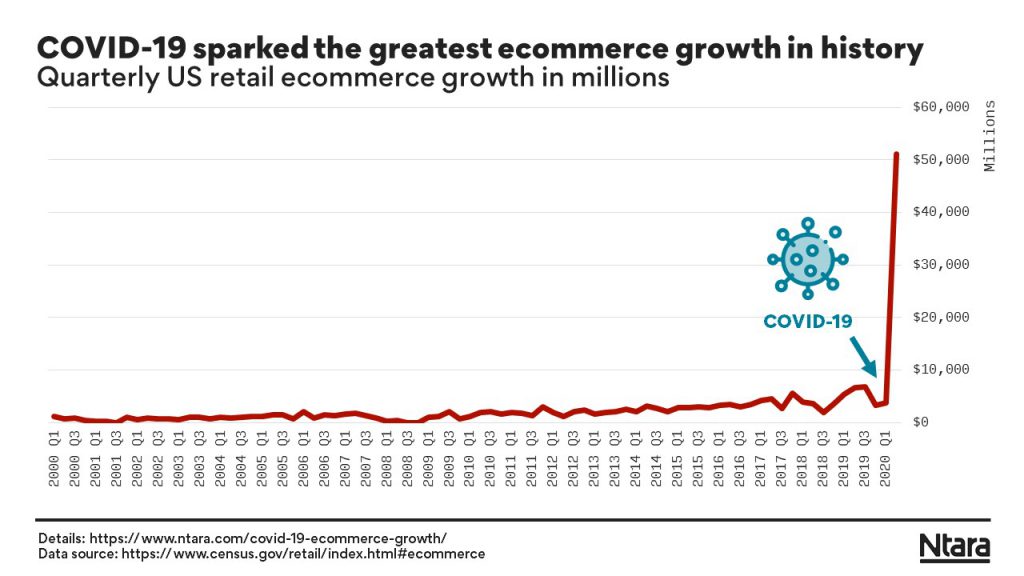
The chart above shows how much American retail ecommerce has grown each quarter since the year 2000. And that big spike at the end is what happened when the lockdown began.
That’s the biggest spike in online shopping in US history—by a long shot. In fact, it’s more than 7X the size of the spike in second place.
Ecommerce spending, in the first quarter of the pandemic, was 32% higher than the quarter before and 45% higher than the year before, bringing America’s total ecommerce spending to about $200 billion dollars in three months alone.
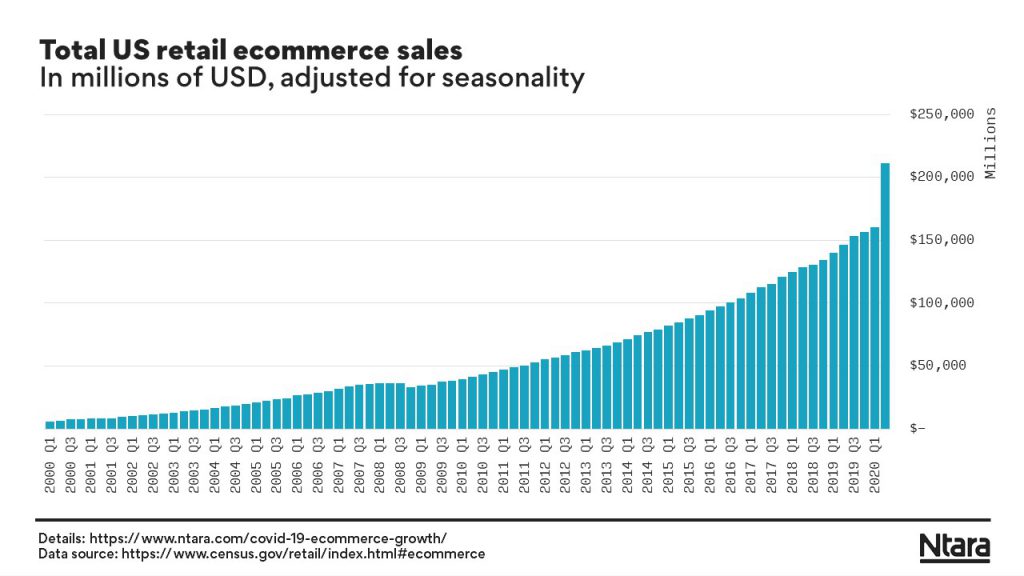
The industries that thrived
So what were we buying?
A quick look at the industries gives a bit of insight into the shopping psychology of a pandemic.
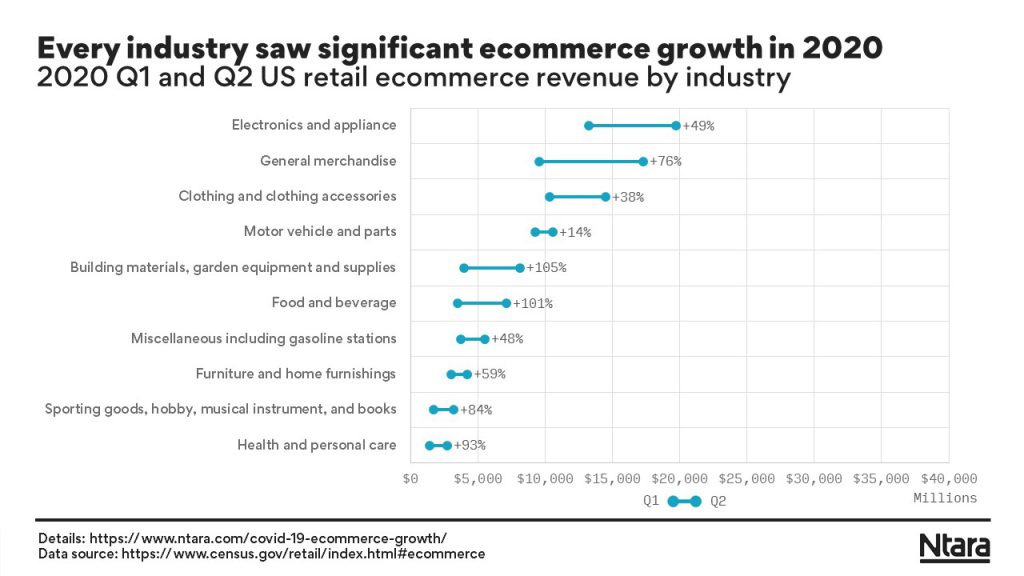
Every single identified industry saw more ecommerce revenue in 2020 Q2 than they did before the COVID-19 lockdowns began, but some industries thrived more than others.
Online food and beverage sales more than doubled, while health and personal care items went up 93%, most likely due to mass purchases of hand sanitizer and face masks.
But it wasn’t just fear that was driving us online; there was a little joy in there, too. Sporting goods and hobbies saw an 84% growth when lockdown began, as people found more ways to have fun around the house. And people seem to have gotten more work around the home done than ever, as building materials and garden equipment saw the biggest growth of all.
New businesses grew during COVID-19
Those shoppers didn’t just turn to Amazon. Yes, Amazon did see a 20% quarter-over-quarter growth when the lockdown began, according to Digital Commerce 360—but they weren’t the only company bringing in ecommerce revenue.
Shopify, which hosts nearly 1.5 million ecommerce sites, saw a massive increase in new customers. According to their financial releases, new stores created on their platform grew 71% compared to the first quarter of 2020, and that led to record-setting revenues.
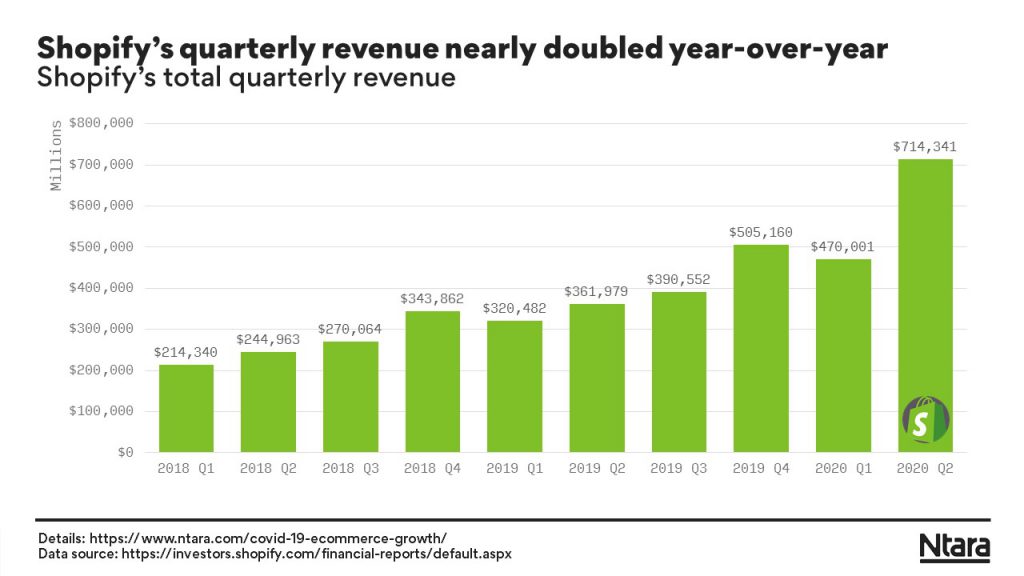
A lot of businesses have seen this year’s crisis as an opportunity, as have a lot of entrepreneurs. The COVID-19 lockdown measures also brought on more new business applications than ever before:
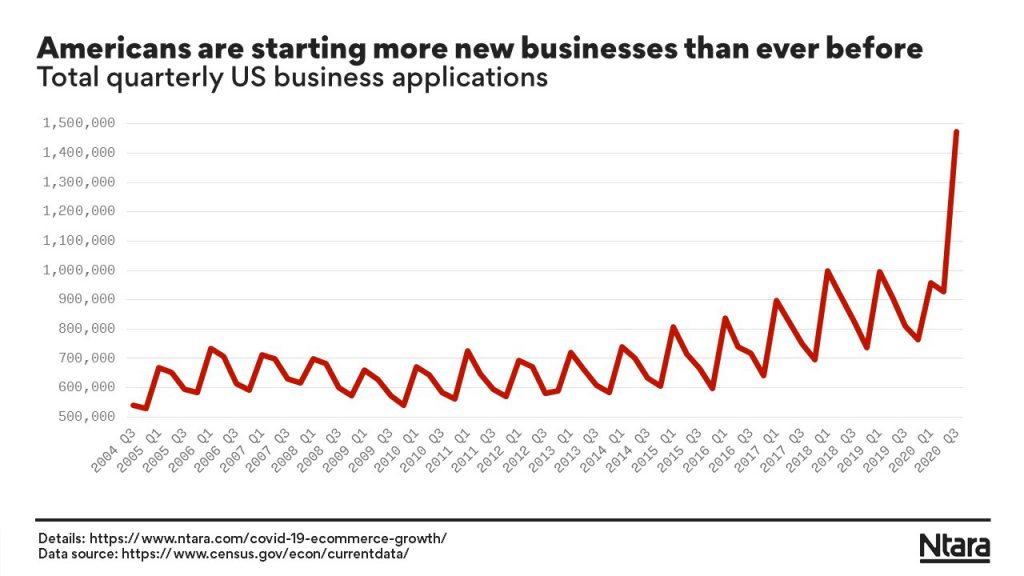
Many of these new business applications are coming from the newly laid-off and gig economy workers, according to the Wall Street Journal. Typically, they’re small, digital business opened by young people who are fueled by the unique combination of desperation and inspiration that losing your job during a world-changing crisis can bring.
Ecommerce thrives during a crisis
This isn’t the first time this has happened. Ecommerce is unusually resilient during a crisis, whether that crisis is a health pandemic or The Great Recession of 2008.
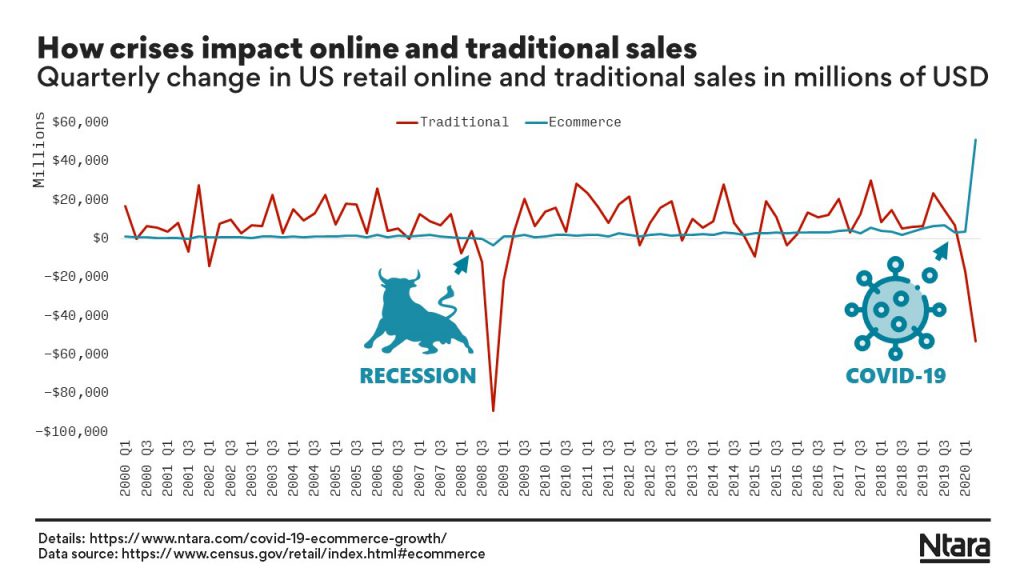
When a crisis hits, traditional retail sales start to plummet but ecommerce stays relatively steady.
We’re not the first people to notice that. Back when The Great Recession hit, several papers were written on the resilience of ecommerce, with one paper finding that adapting to ecommerce didn’t just help businesses survive—it was a significant predictor for how well a whole nation would make it through the crisis.
Why? According to the authors, the difference is in cost, productivity, and flexibility. When a market gets tough, ecommerce isn’t stuck in a geographic location. They have the flexibility to spread out to new markets, or they can go straight to their customers, wherever they are.
Even if they’re locked inside their homes.
The future of ecommerce
It remains to be seen what will happen when the COVID-19 vaccines roll out and the fears keeping us inside our homes fade away. Millions of Americans have discovered new ways to get the things they need without ever leaving their house. But when that becomes an option instead of a necessity, will those new habits die?
We don’t have a crystal ball but we do have opinion surveys. According to a McKinsey & Company survey of 2,021 consumers, for a lot of people, the answer is “yes.”
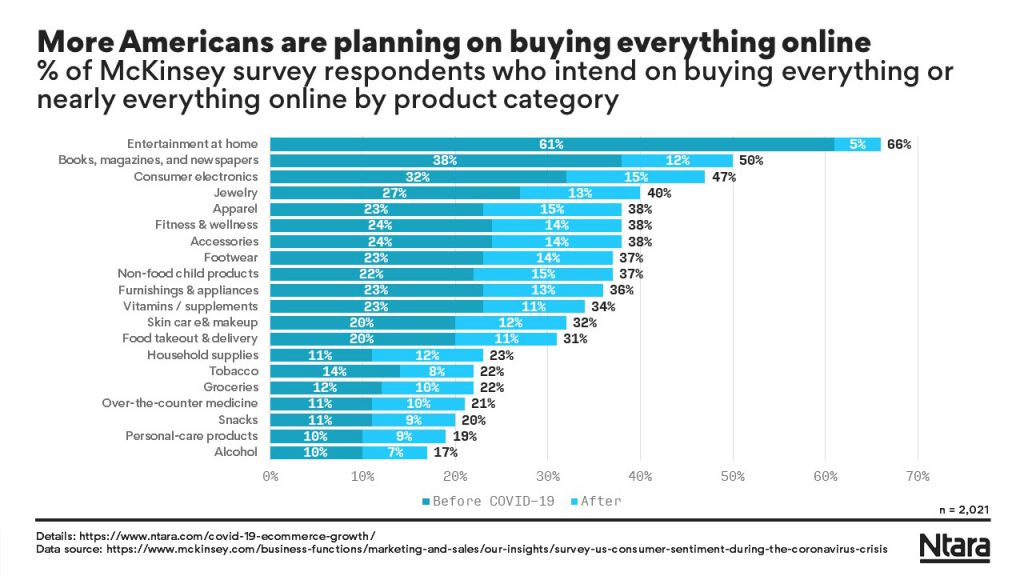
McKinsey & Company is predicting a 20-50% growth in ecommerce sales for most types of products after the lockdown ends and, as the chart above shows, a lot of people aren’t just going to shop online when it’s convenient. A lot of people are planning on purchasing every single thing they buy online.
The world is changing—and not just because of COVID-19. Ever since the information age began, we’ve been rapidly reshaping the world into a new, digital ecosystem, where in-person offices, face-to-face meetings, and brick-and-mortar stores just aren’t as vital as they once were.
This year has pushed that change into warpspeed, pushing the digitization of our world, by IBM’s estimate, five years ahead of schedule. And with more new business ideas coming to life than ever before, there’s a lot of reason to believe that some incredible new ideas are just around the corner.
This has been a dark year—but it might bring us into a brilliant decade.